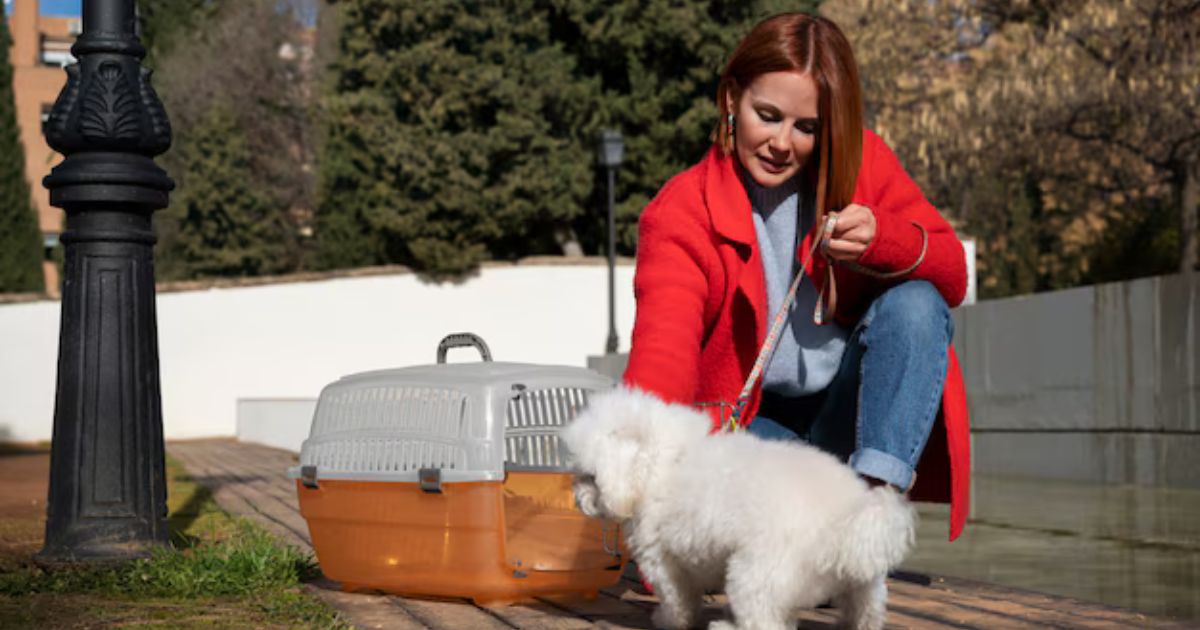Types of Pet Carriers
There are a variety of pet carriers on the market, each designed to accommodate different pets and travel needs. Here are the most common types:
Hard-Sided Carriers
Hard-sided carriers are typically made of durable plastic and are ideal for both air and car travel. They provide excellent protection and are easy to clean. These carriers often come with a sturdy door and plenty of ventilation to keep your pet comfortable.
Soft-Sided Carriers
Soft-sided carriers are made from lightweight fabric, making them ideal for short trips or carrying your pet on foot. Many are collapsible, making them easy to store when not in use. They often feature mesh panels for ventilation and a comfortable interior for your pet.
Backpack Carriers
For pet owners on the go, backpack carriers are a convenient option. They allow you to carry your pet on your back while keeping your hands free. These carriers are especially popular for outdoor adventures and hiking.
Wheeled Carriers
If you’re traveling through an airport or a busy area, a wheeled carrier is a great option. These carriers can be pulled like a suitcase, reducing the strain on your back and shoulders. They’re particularly useful for larger pets that may be too heavy to carry by hand.
Car Seat Carriers
Car seat carriers are made especially to keep your pet safe while you drive. In order to keep your pet from moving around too much and to protect both of your safety, they frequently have a harness attachment.
Airline-Approved Carriers
If you’re flying with your pet, it’s important to choose an airline-approved carrier. These carriers meet specific size and safety requirements set by airlines to ensure your pet’s safety during the flight. They are usually soft-sided and designed to fit under the seat in front of you.
How to Choose the Right Pet Carrier
When choosing a pet carrier, it’s essential to consider your pet’s size, temperament, and your travel needs. Here are some factors to keep in mind:
Size
Your pet should be able to lie down, stand, and turn around in the carrier without difficulty. It shouldn’t be so big, though, that your pet can move around a lot, which could hurt them while traveling. To guarantee a good fit, measure the length and height of your pet and compare it to the carrier’s measurements.
Material
Consider the material of the carrier based on your travel needs. Hard-sided carriers offer more protection but may be bulkier, while soft-sided carriers are lighter and more portable but may not provide as much security in rough conditions.
Ventilation
Proper ventilation is essential to keep your pet comfortable during travel. Look for carriers with mesh panels or multiple air holes to ensure good airflow.
Comfort
Ensure that the carrier has a soft, padded interior for your pet to rest on. You may want to add a blanket or a familiar item to make the space cozier and reduce your pet’s anxiety.
Security Features
Check for secure latches, zippers, or closures to prevent your pet from escaping. Some carriers also come with harness attachments to keep your pet safe while inside.
Portability
If you’ll be carrying the carrier by hand, make sure it has comfortable handles or shoulder straps. For larger pets, consider wheeled carriers or backpacks to reduce strain.
Airline Regulations
If you’re flying with your pet, check with the airline for specific size and material requirements. Most airlines have strict guidelines for pet carriers, and failure to comply can result in your pet being denied boarding.
Safety Tips for Traveling with a Pet Carrier
To ensure your pet’s safety and comfort during travel, follow these tips:
Get Your Pet Used to the Carrier
Before your trip, introduce your pet to the carrier gradually. Place treats, toys, or a blanket inside to create a positive association. Let your pet explore the carrier on their own and slowly work up to closing the door for short periods.
Secure the Carrier
When traveling by car, make sure the carrier is securely fastened to prevent it from moving around during sudden stops or turns. You can use seat belts or special car seat attachments for added security.
Keep Your Pet Calm
Traveling can be stressful for pets. To help reduce anxiety, cover the carrier with a light blanket to block out visual stimuli, especially in busy environments. You can also use calming sprays or consult your vet about calming supplements if needed.
Take Breaks
If you’re on a long road trip, make sure to stop regularly to give your pet a chance to stretch, hydrate, and relieve themselves. Always keep your pet on a leash or in a secure area when taking breaks.
Check Airline Requirements
If you’re flying, ensure that your pet meets all health and documentation requirements for travel. Some airlines require a health certificate from your vet, and certain breeds may not be allowed on flights due to health concerns.










One thought on “The Simple Guide to Pet Carriers”